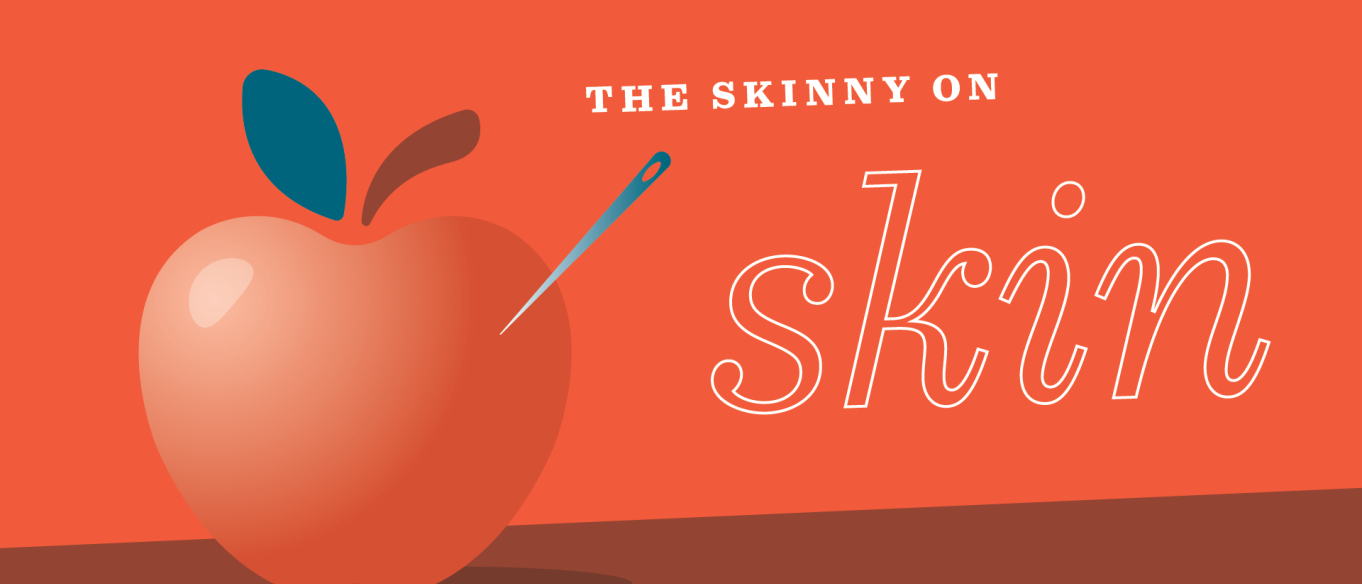
Have you ever wondered what your skin does for you? Use an apple as a model and try a controlled experiment to find out how skin protects our bodies from harmful microorganisms. Adult assistance required.
Age: 8+ (adult assistance required)
Time: One week, 5–10 minutes each day
What you need:
- 1 large, unblemished apple (no bruises or breaks in the skin)
- Permanent marker
- 3 sewing needles or pins
- Candle or lighter
- Small amount of rubbing alcohol
- Small amount of soil
What to do:
1. Use the marker to draw four circles, each about the size of a quarter, on different areas of the apple. Make the circles as far apart from each other as you can. Label the circles A, B, C, and D.
2. Ask an adult to sterilize the needles by briefly heating each one in the flame of a candle or lighter. This will kill any bacteria or microorganisms that might be on the needles. Once they have been sterilized, don’t touch the sterilized ends with your fingers or anything else until you use them in the next steps.
3. Poke the sterile end of one needle through the skin of the apple inside circle A in three different places.
4. Poke the sterile end of a different needle through the apple’s skin inside circle B in three places. This time, pour or wipe rubbing alcohol over the needle holes in the circle.
5. Roll the last sterilized needle in the soil a few times. Now poke it through the skin inside circle C in three places.
6. Do nothing to circle D. This will be your control--the part you don’t change, so you have something to compare against.
7. Predict what will happen in each of the circles over time if the apple sits out in the air. What changes do you expect to see? How long do you think they will take to appear? What differences might you see between the four circles?
8. Leave the apple out on a table or counter, and observe it daily for one week. Record observations or drawings of the changes taking place. Where do you notice rotten spots? Why do you think the rotten spots grow each day?
9. Compare and contrast what happened to the apple in the different circles. Which circle experienced the most dramatic changes?
10. Compare the apple skin in this model to your own skin. Based on the results of your experiment, what might happen if your skin were cut or broken? What could you do to prevent an infection?
What’s happening?
Your skin acts like a barrier to prevent bacteria, viruses, and other microorganisms from entering your body. When a cut or break in the skin lets in microorganisms, it can lead to infection and disease. Cleaning a cut with antiseptics like alcohol and covering the wound with a bandage helps protect the skin and prevent infection.
In this experiment, you used an apple as a model to find out what might happen if a wound in your skin were not properly treated. Poking the apple skin with the needle creates holes (like a cut in your own skin) that allow microorganisms to enter the apple. As they invade the apple, the microorganisms multiply quickly and rot the apple.
What makes this a controlled experiment? You changed one variable—the amount of microorganism contamination entering the apple skin—in different ways, while keeping other factors the same (the type of apple, the size of the holes, etc.) The variable you changed is called the independent variable. The difference you observed on the apple’s skin in each circle is the dependent, or responding variable—the skin difference depended on, or responded to, the amount of contamination. You also included a control (circle D) where you changed nothing, to make sure any differences you saw in the other circles were related to your changes, and not just happening all over the apple.

